Click on images to enlarge

habit in flower (Photo: Sheldon Navie)
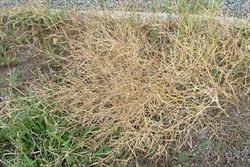
habit of old plant (Photo: Sheldon Navie)

stem base with stiff hairs (Photo: Sheldon Navie)
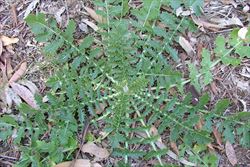
basal rosette of leaves (Photo: Sheldon Navie)
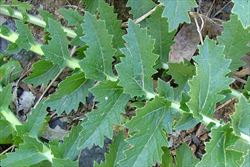
close-up of deeply-lobed lower leaves (Photo: Sheldon Navie)
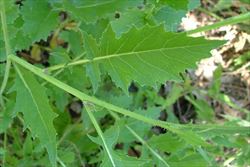
upper leaves (Photo: Sheldon Navie)
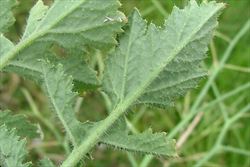
close-up of leaf undersides (Photo: Sheldon Navie)
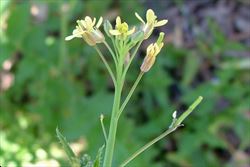
elongating flower cluster (Photo: Sheldon Navie)
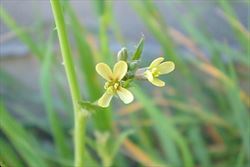
close-up of flowers with four small yellow petals (Photo: Sheldon Navie)

immature fruit (Photo: Sheldon Navie)

mature fruit (Photo: Sheldon Navie)
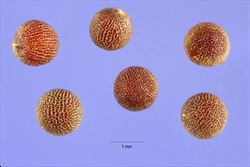
close-up of seeds (Photo: Steve Hurst at USDA PLANTS Database)

infestation of old plants along a roadside at Redbank in Ipswich (Photo: Sheldon Navie)
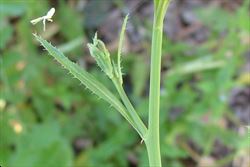
close-up of narrow uppermost leaves and flower buds (Photo: Sheldon Navie)

young fruit beginning to develop (Photo: Sheldon Navie)

close-up of mature fruit that has split open to release its seeds (Photo: Sheldon Navie)
Scientific Name
Brassica tournefortii Gouan
Family
Brassicaceae (Queensland, New South Wales, the ACT, Victoria, Tasmania, Western Australia and the Northern Territory)
Cruciferae (South Australia)
Common Names
African mustard, Asian mustard, long fruited wild turnip, long-fruited wild turnip, Mediterranean mustard, Mediterranean turnip, Moroccan mustard, prickly turnip, Sahara mustard, turnip weed, wild turnip, wild turnip-rape
Origin
Native to southern Europe (i.e. Spain, Italy and Greece), northern Africa (i.e. northern Algeria, Egypt, northern Libya, Morocco and Tunisia), western Asia and Pakistan.
Naturalised Distribution
Widely naturalised in southern and central Australia (i.e. in southern and central Queensland, in many parts of New South Wales, Victoria, Tasmania and South Australia, in southern and central Western Australia, and in the southern parts of the Northern Territory). Also sparingly naturalised in the ACT.
Naturalised overseas in the UK, New Zealand and south-western USA (i.e. California, Nevada, Arizona, New Mexico and Texas).
Notes
Wild turnip (Brassica tournefortii) is regarded as an environmental weed in Victoria, Tasmania, South Australia, New South Wales, Western Australia and the Northern Territory. It is an aggressive weed of disturbed sites, roadsides, cultivation and a wide variety of natural habitats in temperate, semi-arid and arid regions. These habitats include coastal sites, islands, sand dunes, shrublands, open woodlands and arid wetlands.
In Western Australia, wild turnip (Brassica tournefortii) is of most concern in coastal habitats and sandy sites. In the Northern Territory it is a very widespread and common weed of arid wetlands and drylands. It occasionally forms moderately dense patches along river banks, in linear wooded swamps, in other swamps and in flood prone flats in this region of central Australia. This species is also a widespread weed of conservation areas (e.g. Marino Conservation Park in South Australia and Kinchega National Park in western New South Wales) that can outcompete and replace ephemeral native species. It grows very fast, smothering native herbaceous plants and competing with low shrubs for light and soil moisture.
In the USA, wild turnip (Brassica tournefortii) suppresses native desert wildflowers by monopolising the available soil moisture and fruiting before native species have begun to flower. It tends to expand over larger areas when drought suppresses other annual species and increases fuel loads and fire hazards in desert scrub communities. This species is thought to be one of six main weeds that have the potential to cause the most ecological damage in the Sonoran Desert in southern USA. In fact, by 2005 about three-quarters of the most famous wildflower areas in California and Arizona were overrun with this species. It may therefore also threaten the native ephemeral wildflowers of Western Australia.

